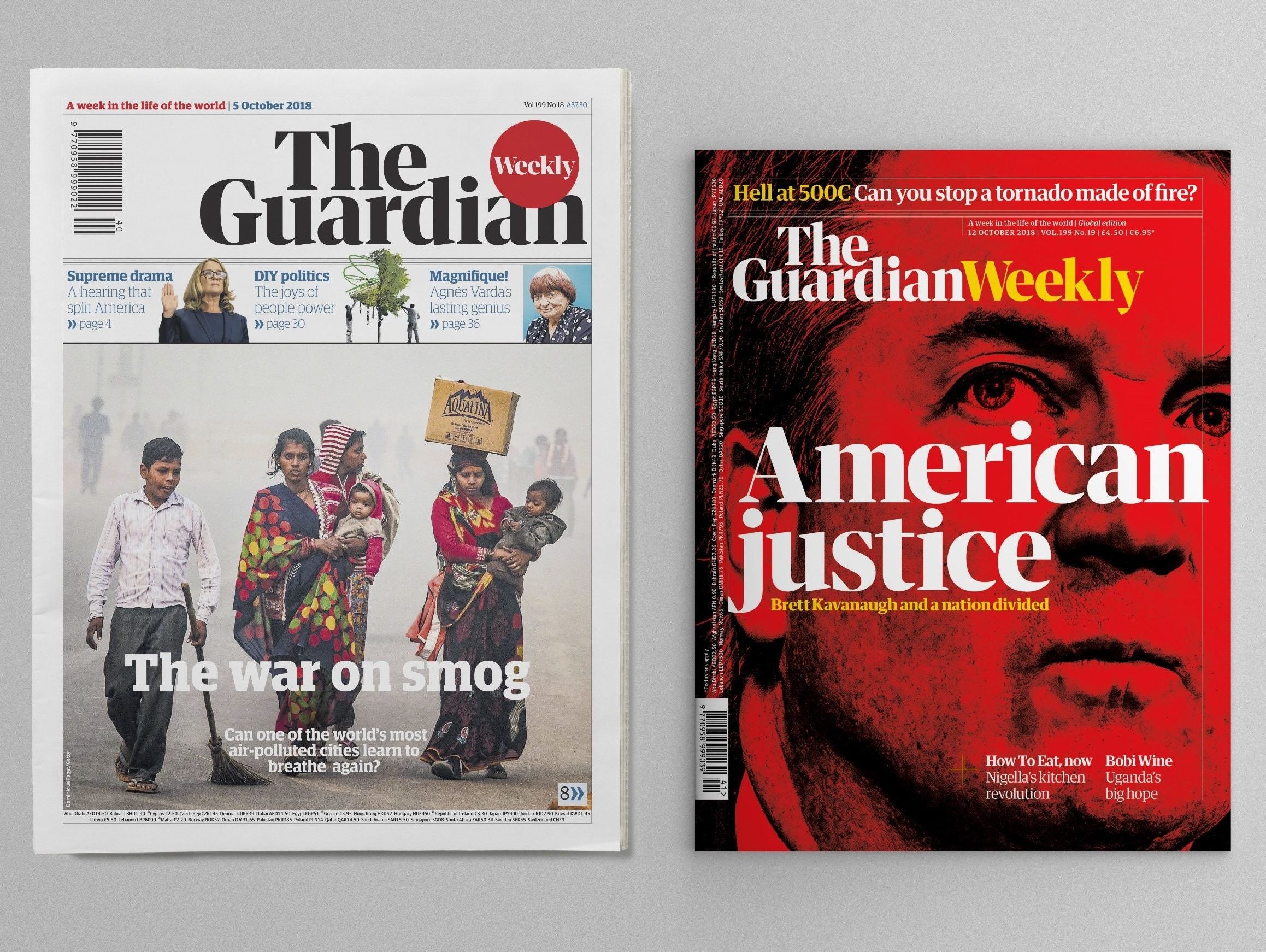
The Guardian Weekly has relaunched as a news magazine, hiking its cover price by £1.60, as it aims to boost its 32,000 subscriber base by half.
Previously sold at £2.90 (€5.50) in a small newsprint format, the new glossy edition will cost £4.50 (€6.95) where sold in the UK, with international prices increasing by 25-30 per cent on average.
The new price brings it in line with other news weeklies.
Arriving on newsstands every Thursday, the new look international weekly will continue to offer a selection of journalism published in the Guardian newspaper, which is also available for free on its website and news app.
Editor Will Dean said he wanted the magazine to draw in younger readers who may have grown up reading news and features online, but who liked the idea of reading print.
Director of publishing Mylene Sylvestre said: “There’s clearly something happening in the magazine market and news weeklies are doing really well, so it was kind of like the stars aligned.
“When we were ready to explore what we could actually do with The Guardian Weekly, the research showed that there was potential for a news weekly and there’s definitely a Guardian space in that category.
“From a business point of view, it was reassuring to know we’ve got this really loyal base, so it was not a crazy new venture but an evolution.”
Established in 1919, the Guardian Weekly has an overall circulation of 42,000 and is distributed in 170 countries, including special editions for Australia and the United States.
Following the relaunch – the first edition will be published tomorrow – it will be available on more newsstands in the UK, where it will be sold at more than 120 WH Smith travel stores, and Australia.
A subscription will be 30 per cent cheaper than buying on the newsstand, according to Sylvestre.
Dean said the “joy of print” and of “good, well-designed magazines” would incentivise readers to pick up and pay for the Guardian Weekly over simply reading the content for free online.
Sylvestre added: “All the readers in our research groups were saying that what they wanted the weekly to do was create a kind of haven and some calmness in the crazy deluge of news.”
Guardian US and Australia chief executive Evelyn Webster said: “I am delighted we are able to fulfil our Australian and North American readers’ growing demand for more localised content, packaged in a new format which is both visually arresting and provides our journalism with much greater space to breathe.
“We have enjoyed strong growth in The Guardian’s US and Australian operations, and we fully expect that to continue as we develop our product offerings in these territories.”
When it comes to selecting content for the magazine, editor Dean said timeliness and international appeal were big factors, as it was “trying not to get too much British stuff in there”.
Pieces compiled from the Guardian website and daily newspaper are only lightly edited by the Guardian Weekly team – who will only usually make edits to bring stories up-to-date since their original publication.
Sylvestre said she did not see the Guardian Weekly as a competitor to existing news weeklies, such as the Economist and New Statesman, adding: “We’d be flattered if they saw [it] as a competitor.”
On the cover price hike, she said: “We feel that it has its own voice and its own place, but we thought that we needed to price this in-line with the category to credible and to reflect the improved production value.”
Outlining the vision for the new title, Dean said: “What we wanted to do was create something that looked and felt like it could compete on the newsstand with other news weeklies, not necessarily as a competitor but as a compliment, because it’s a very unique format.”
Split into four sections covering news, long-read features, opinion and culture, the new look Guardian Weekly will be produced by the same team behind the newsprint edition. There have been no new hires.
Art director Andrew Stocks, who was described as “core” to the tabloid relaunch of the daily Guardian newspaper, has also played a central role in the new magazine’s redesign.
Email pged@pressgazette.co.uk to point out mistakes, provide story tips or send in a letter for publication on our "Letters Page" blog
